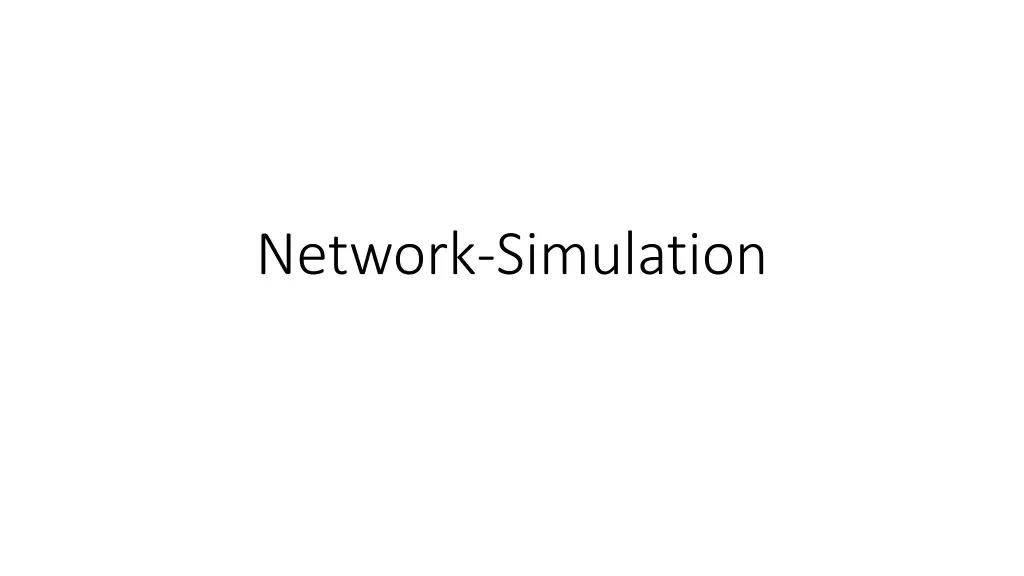
Network Simulation Basics and Program Execution Guide
Dive into the world of network simulation with this comprehensive guide covering the installation of NS2, file formats, program execution, and traffic protocols. Learn how to create wired networks, add UDP and TCP protocols, and analyze packet transmission using tools like Tcl, Nam, and Awk.
Download Presentation

Please find below an Image/Link to download the presentation.
The content on the website is provided AS IS for your information and personal use only. It may not be sold, licensed, or shared on other websites without obtaining consent from the author. If you encounter any issues during the download, it is possible that the publisher has removed the file from their server.
You are allowed to download the files provided on this website for personal or commercial use, subject to the condition that they are used lawfully. All files are the property of their respective owners.
The content on the website is provided AS IS for your information and personal use only. It may not be sold, licensed, or shared on other websites without obtaining consent from the author.
E N D
Presentation Transcript
Exp:1 Exp:1 Installation of NS2 Introduction (What is simulation, what are the file formats of NS2 (c++, tcl, nam, tr, awk) Executing simple program to create a wired network program (TCL) Adding UDP protocol and CBR traffic for packet transmission. TCP protocol and FTP traffic Nam file viewing
Source N3 (UDP 0)destination N5(null 0) #CBR packets transform [fid=0] Source N2 (TCP 0) destination N4 (tcp sink 0) #ftp packets transform [fid=0]
awk AWK is a programming language designed for text processing and typically used as a data extraction and reporting tool. According to The GNU Awk Users Guide it stands for Aho Weinberger And Kernighan
BEGIN {} { } END { }
BEGIN {cbr_send = 0; cbr_recv = 0; tcp_send = 0; tcp_recv = 0; } { if($1=="+"&&$3==3&&$4==0&&$5=="cbr") { cbr_send++; } if($1=="r"&&$3==1&&$4==5&&$5=="cbr") { cbr_recv++; } if($1=="+"&&$3==2&&$4==0&&$5=="tcp") { tcp_send++; } if($1=="r"&&$3==1&&$4==4&&$5=="tcp") { tcp_recv++; } }
END { print "No of CBR packets send\t\t:" cbr_send print "No of CBR packets received\t:" cbr_recv print "Packet Delivery ratio\t\t:" (cbr_recv/cbr_send*100) print "\n\n\nNo of TCP packets send\t\t:" tcp_send print "No of TCP packets received\t:" tcp_recv print "Packet Delivery Ratio\t\t:" (tcp_recv/tcp_send*100) }
gedit exp1.tcl #for writing the program ns exp1.tcl #two files created (tr and nam file) nam exp1.nam #for viewing network flow (GUI window) gedit exp1.awk #for writing awk script for analyzing tr file) awk f exp1.awk exp1.tr
Exp:2 Write a program for a simple network according to the following figures, n0 node connected to n4 by TCP and n1 node connected to n5 by UDP.






















